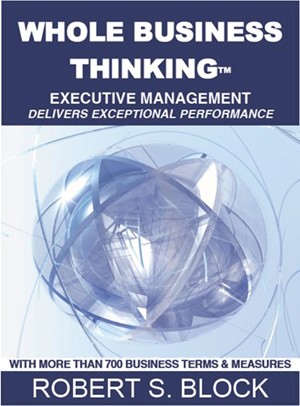The External Factors Affecting Your Business
Try as you might, you will never really “own” your business. It is too much part of a bigger network that is too far beyond your control for that. While there might be plenty of directions you want to take your company in, you’ll also be subject to the whims and plans of your fellow humans, who all too often (it can feel like) have plans that are out of sync with your own. Here are just a few of the ways your business can be affected by external factors, to which you only have a passing, observing role.
Photo courtesy of Pexels
Political
A thriving economy relies on there being not too many things rocking the boat. You can see the way the stock market reacts whenever an announcement or decision is made; sometimes it gets a boost, which is its way of saying ‘we approve!’, and sometimes it takes a nosedive, at which point everything gets a bit nervous. With Donald Trump, for instance, no one – including quite possibly Donald Trump – is quite sure which way the economy will go. That one is just for time to figure out, but down the line it could have a knock on effect to your business. A good economy means you’re in the best possible position to succeed. Also, you’ll notice how things can get a bit twitchy whenever there’s political unrest, more commonly when it’s overseas. A destabilised China, for instance, can have effects that spread across the world, such is the way all our economies are interlinked.
Your Business Partners
It’s all good and well keeping your own house in order. It’s all good and well operating at full capacity, with the books in order and things slowly progressing just fine and dandy. But how many other businesses do you rely on for your success? You’re probably more wrapped up in the well-being of other companies than you think. For instance, how does the software you rely on influence your success? You might want to look at a service such as software escrow, which would give you access to the software you depend on should the software company fold. Elsewhere, you could face major difficulties if your suppliers unexpectedly fold. You can’t stop that from happening, but you can make sure you have the contingency plans in place so that you’re able to handle any temporary setbacks relating to stock and so forth. Essentially, it’s important not to be too reliant on any other single company.
Trends
You’re at the top of your game at the moment, right on the cutting edge of what’s new and fresh. You’re part of a movement that is going places! Only, it’ll only be going places up until the time when it’s not. Take a look through history and everything that was once ‘hot’ ended up being pretty ‘not’ in the end. You only need to look at what passed as fashion twenty (or any number) years ago to see that things really do change. Did the people wearing the clothes back then think they’d one day look so lame? Of course not! Did Blockbuster think there would always be a demand for home videos? Probably! Trends come and go. The important thing is to realise that ‘trendy’ doesn’t really mean anything, and that you shouldn’t be relying on it for your success. Always make sure you’re looking to the future, especially if the industry you’re in is prone to change.
External Innovation: Good
Not every external factor is bad, of course. In fact, all the ones listed above can be good if the cards fall nicely enough. This positive change also extends to innovation, which as we all know is essentially what’s making the economy thrive in recent years. And it looks like it’s here to stay. Innovation is creating new markets, new products, new services, new just about everything, and it’s happening all the time. Every year, there are new services that help to streamline businesses and make them less dependent on other factors. You should be keeping your ear out for the developments that will aid your business. Everybody else will, and to not do so you run the risk of falling behind. Make sure you’re reading up on all the best business online blogs and reading your industry magazines; it’ll keep you fresh.
External Innovation: Bad
With that being said, not all innovation will be there to give you a boost. In fact, sometimes it’ll come along and put you right out of business. This has been happening for centuries, with new products popping up that resulted in massive shifts in the economy. We see it today, with Uber versus traditional taxi companies. No matter who you are and how successful your business is, you should always be ready to face oblivion. It’s the way innovation works. If you’re worried about an emerging company or trend, then look at diversifying your business – but do it well in advance. The number of jobs that may be lost – and industries taken of – by robots in the coming decades should be an eyeopener for many business leaders.
Environmental Factors
Sometimes, the factors that affect your business has nothing at all to do with other humans. It’s all about that grand old mother earth, our home. We think we know a lot about the environment, but we don’t – and unfortunately, we’re about to know a whole lot less once climate change really gets underway. A changing climate will affect a lot, from how things are produced (if they’re able to be at all) and how they get around the world. It’ll also bring more extreme weather, so making sure you have business insurance and cloud storage will be essential.
Predicting The Changes
You don’t know what will happen in the world, because no one does. But you can be prepared by keeping on top of global events – not just what’s happening in your industry, but in all the industries that branch out from your own too. We’re all connected in the end!




 Power Stars to Light the Business Flame, by Hank Moore, encompasses a full-scope business perspective, invaluable for the corporate and small business markets. It is a compendium book, containing quotes and extrapolations into business culture, arranged in 76 business categories.
Power Stars to Light the Business Flame, by Hank Moore, encompasses a full-scope business perspective, invaluable for the corporate and small business markets. It is a compendium book, containing quotes and extrapolations into business culture, arranged in 76 business categories.
 Budget performance is important to the successful management of any organization and to the personal performance of individual executives and managers. Consequently, budget reviews occur on a monthly or quarterly basis; allowing enough time to pass for meaningful trends to develop but not so much time that corrective action could not be taken so to ensure a business group remains on budget.
Budget performance is important to the successful management of any organization and to the personal performance of individual executives and managers. Consequently, budget reviews occur on a monthly or quarterly basis; allowing enough time to pass for meaningful trends to develop but not so much time that corrective action could not be taken so to ensure a business group remains on budget.